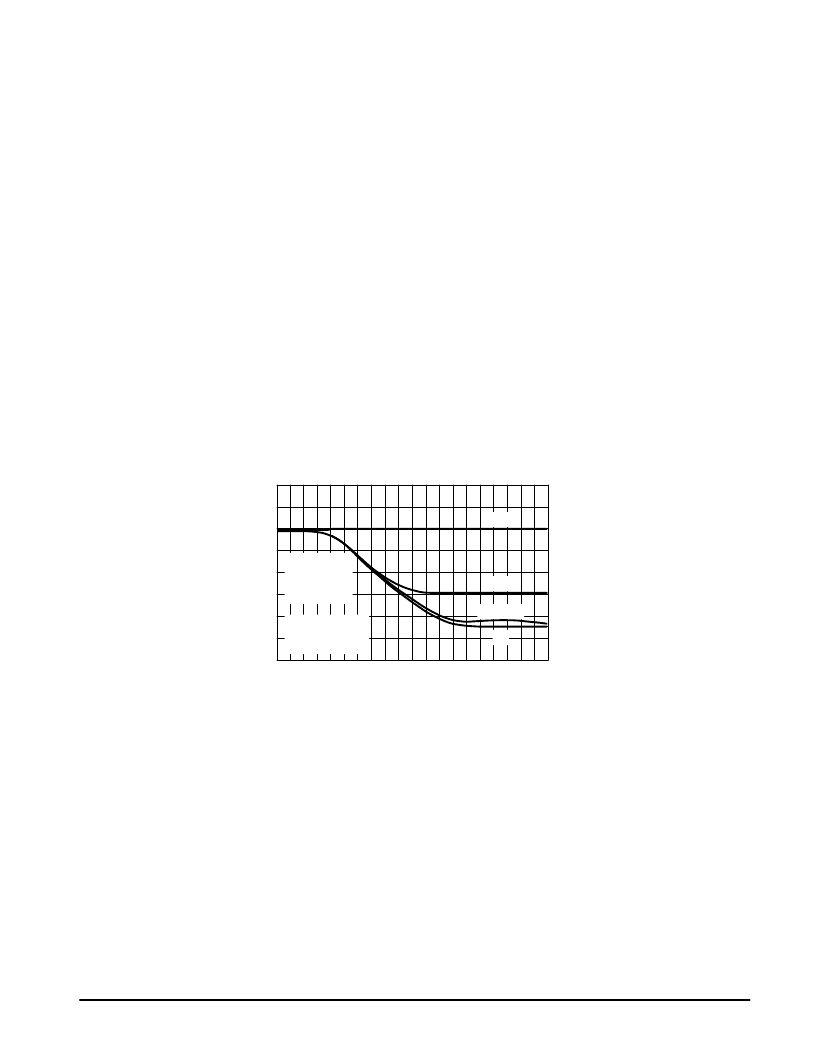- 您現(xiàn)在的位置:買賣IC網(wǎng) > PDF目錄371008 > MC13150 (Motorola, Inc.) NARROWBAND FM COILLESS DETECTOR IF SUBSYSTEM FOR CELLULAR AND ANALOG APPLICATIONS PDF資料下載
參數(shù)資料
| 型號(hào): | MC13150 |
| 廠商: | Motorola, Inc. |
| 英文描述: | NARROWBAND FM COILLESS DETECTOR IF SUBSYSTEM FOR CELLULAR AND ANALOG APPLICATIONS |
| 中文描述: | COILLESS探測(cè)器窄帶調(diào)頻中頻移動(dòng)電話和模擬應(yīng)用子系統(tǒng) |
| 文件頁數(shù): | 8/20頁 |
| 文件大小: | 514K |
| 代理商: | MC13150 |

MC13150
8
MOTOROLA ANALOG IC DEVICE DATA
APPLICATIONS INFORMATION
Evaluation PC Board
The evaluation PCB is very versatile and is intended to be
used across the entire useful frequency range of this device.
The center section of the board provides an area for
attaching all SMT components to the circuit side and radial
leaded components to the component ground side (see
Figures 29 and 30). Additionally, the peripheral area
surrounding the RF core provides pads to add supporting
and interface circuitry as a particular application dictates.
There is an area dedicated for a LNA preamp. This
evaluation board will be discussed and referenced in this
section.
Component Selection
The evaluation PC board is designed to accommodate
specific components, while also being versatile enough to
use components from various manufacturers and coil types.
The applications circuit schematic (Figure 15) specifies
particular components that were used to achieve the results
shown in the typical curves but equivalent components
should give similar results. Component placement views are
shown in Figures 27 and 28 for the application circuit in
Figure 15 and for the 83.616 MHz crystal oscillator circuit in
Figure 16.
Input Matching Components
The input matching circuit shown in the application circuit
schematic (Figure 15) is a series L, shunt C single L section
which is used to match the mixer input to 50
. An
alternative input network may use 1:4 surface mount
transformers or BALUNs. The 12 dB SINAD sensitivity
using the 1:4 impedance transformer is typically –100 dBm
for fmod = 1.0 kHz and fdev =
±
5.0 kHz at fin = 50 MHz and
fLO = 50.455 MHz (see Figure 14).
It is desirable to use a SAW filter before the mixer to
provide additional selectivity and adjacent channel rejection
and improved sensitivity. SAW filters sourced from Toko
(Part # SWS083GBWA) and Murata (Part # SAF83.16MA51X)
are excellent choices to easily interface with the MC13150
mixer. They are packaged in a 12 pin low profile surface
mount ceramic package. The center frequency is 83.161 MHz
and the 3.0 dB bandwidth is 30 kHz.
Figure 14. S+N+D, N+D, N, 30% AMR
versus Input Signal Level
INPUT SIGNAL (dBm)
–120
S
20
–60
VCC = 3.0 Vdc
fmod = 1.0 kHz
fdev =
±
5.0 kHz
fin = 50 MHz
–50
–40
–30
–20
–10
0
10
–100
–80
–60
–40
fLO = 50.455 MHz
LO Level = –10 dBm
See Figure 15
S+N+D
N+D
30% AMR
N
相關(guān)PDF資料 |
PDF描述 |
|---|---|
| MC13150FTB | NARROWBAND FM COILLESS DETECTOR IF SUBSYSTEM FOR CELLULAR AND ANALOG APPLICATIONS |
| MC13156DW | WIDEBAND FM IF SYSTEM FOR DIGITAL AND ANALOG APPLICATIONS |
| MC13156FB | WIDEBAND FM IF SYSTEM FOR DIGITAL AND ANALOG APPLICATIONS |
| MC13158FTB | WIDEBAND FM IF SUBSYSTEM FOR DECT AND DIGITAL APPLICATIONS |
| MC1315P | CBS SQ LOGIC DECODER SYSTEM |
相關(guān)代理商/技術(shù)參數(shù) |
參數(shù)描述 |
|---|---|
| MC13150FTA | 制造商:MOTOROLA 制造商全稱:Motorola, Inc 功能描述:NARROWBAND FM COILLESS DETECTOR IF SUBSYSTEM FOR CELLULAR AND ANALOG APPLICATIONS |
| MC13150FTB | 制造商:LANSDALE 制造商全稱:LANSDALE Semiconductor Inc. 功能描述:Narrowband FM Coilless Detector IF Subsystem |
| MC13155 | 制造商:MOTOROLA 制造商全稱:Motorola, Inc 功能描述:WIDEBAND FM IF |
| MC13155D | 制造商:LANSDALE 制造商全稱:LANSDALE Semiconductor Inc. 功能描述:Wideband FM IF |
| MC13156 | 制造商:MOTOROLA 制造商全稱:Motorola, Inc 功能描述:Wideband FM IF System |
發(fā)布緊急采購,3分鐘左右您將得到回復(fù)。